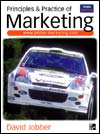Answer the self-test questions below and then click on 'submit' to send your answers. The test will be marked instantly, so that you can see how well you have done.
 |
1 |  | 
The product line can be described as: |
|  | A) | The development of a single product over time |
|  | B) | All the products a company sells |
|  | C) | The production facilities used to manufacture products |
|  | D) | All the products a company makes |
|  | E) | Brands that are closely related in terms of function and benefits provided |
 |
 |
2 |  | 
Why might a company introduce a fighter brand? |
|  | A) | To reduce stock levels by selling off old stock at reduced prices |
|  | B) | To compete by cutting prices of existing brands |
|  | C) | To open up high quality retail outlets |
|  | D) | To compete with low price substitutes while protecting existing brand reputations |
|  | E) | To obtain publicity and raise awareness for a new product launch |
 |
 |
3 |  | 
The strength of a brand's position in the market place is built on six elements: brand domain, brand heritage, brand assets, brand personality, brand reflection and which one of the following? |
|  | A) | Brand packaging |
|  | B) | Brand values |
|  | C) | Brand price |
|  | D) | Brand advertising |
|  | E) | Brand ownership |
 |
 |
4 |  | 
Internal marketing can be described as: |
|  | A) | Opening factory shops to sell at a discount to staff |
|  | B) | Encouraging staff to take up the study of marketing |
|  | C) | Training and communicating with staff |
|  | D) | Working with trade unions to solve problems |
|  | E) | Offering staff discounts on goods produced by the company |
 |
 |
5 |  | 
Global branding can be achieved in three ways: geographic extension of existing brands, brand alliance through joint ventures and: |
|  | A) | Market penetration |
|  | B) | Brand promotion |
|  | C) | Brand acquisition |
|  | D) | Brand values and quality |
|  | E) | Brand repositioning |
 |
 |
6 |  | 
A good brand name should: |
|  | A) | Sound like an animal or natural phenomenon |
|  | B) | Appeal to young people |
|  | C) | Include the company’s name |
|  | D) | Be distinctive and easy to remember |
|  | E) | Relate to the latest technology |
 |
 |
7 |  | 
In marketing theory, P.L.C. stands for: |
|  | A) | Promotional life cycle |
|  | B) | Production life cycle |
|  | C) | Product life classification |
|  | D) | Product life cycle |
|  | E) | Price list classification |
 |
 |
8 |  | 
The third stage in the P.L.C. is: |
|  | A) | Introduction |
|  | B) | Maturity |
|  | C) | Growth |
|  | D) | Decline |
|  | E) | Profitability |
 |
 |
9 |  | 
In the introduction phase of the P.L.C. a typical marketing objective would be to: |
|  | A) | Increase production capacity |
|  | B) | Reduce promotional spending until the product takes off |
|  | C) | Increase short term sales of the product |
|  | D) | Demonstrate the product to customers |
|  | E) | Create product awareness |
 |
 |
10 |  | 
The process of managing groups of brands and product lines is called: |
|  | A) | Marketing mix planning |
|  | B) | P.L.C. planning |
|  | C) | Portfolio planning |
|  | D) | Sales planning |
|  | E) | Strategic planning |
 |
 |
11 |  | 
Strategic product management offers four principal options: hold, divest, build, and: |
|  | A) | Promote |
|  | B) | Brand |
|  | C) | Research |
|  | D) | Differentiate |
|  | E) | Harvest |
 |
 |
12 |  | 
According to the Boston Consultancy Group Share-Growth Matrix, a product with a high market share in a low growth market is called a: |
|  | A) | Star |
|  | B) | Other |
|  | C) | Dog |
|  | D) | Cash cow |
|  | E) | Problem child |
 |
 |
13 |  | 
According to McKinsey, market attractiveness includes: market size; social, political and legal factors; strength of the competition and which two of the following? |
|  | A) | Knowledge of the industry and good communications |
|  | B) | Price sensitivity and market cost structure |
|  | C) | Customer location and distribution factors |
|  | D) | National and international marketing opportunities |
|  | E) | Market growth and profit potential |
 |
 |
14 |  | 
Ansoff’s Matrix is a strategic marketing tool used to plan for: |
|  | A) | New product development |
|  | B) | Business growth |
|  | C) | Product lifecycle changes |
|  | D) | Market segmentation |
|  | E) | Product positioning |
 |
 |
15 |  | 
Product safety, planned obsolescence and packaging information all relate to which area of marketing? |
|  | A) | Societal marketing |
|  | B) | Strategic marketing |
|  | C) | Ethical marketing |
|  | D) | Green marketing |
|  | E) | Relationship marketing |
 |




 2003 A McGraw-Hill Online Learning Centre
2003 A McGraw-Hill Online Learning Centre